To maximize your micro-hydro system's winter output, start by winterizing key components. Insulate exposed pipes and the powerhouse to prevent freezing. Clear debris from the intake and consider installing a heated screen to maintain water flow. Optimize water management by adjusting turbine settings for winter conditions and regularly inspecting the intake. Prevent ice buildup using heat tape or a bubbler system near critical areas. Enhance turbine efficiency with cold-weather lubricants and proper nozzle adjustments. Implement a robust monitoring system to track performance and quickly address issues. With these steps, you'll be well-equipped to keep your system running smoothly through the coldest months.
Winterize Your Micro-Hydro System
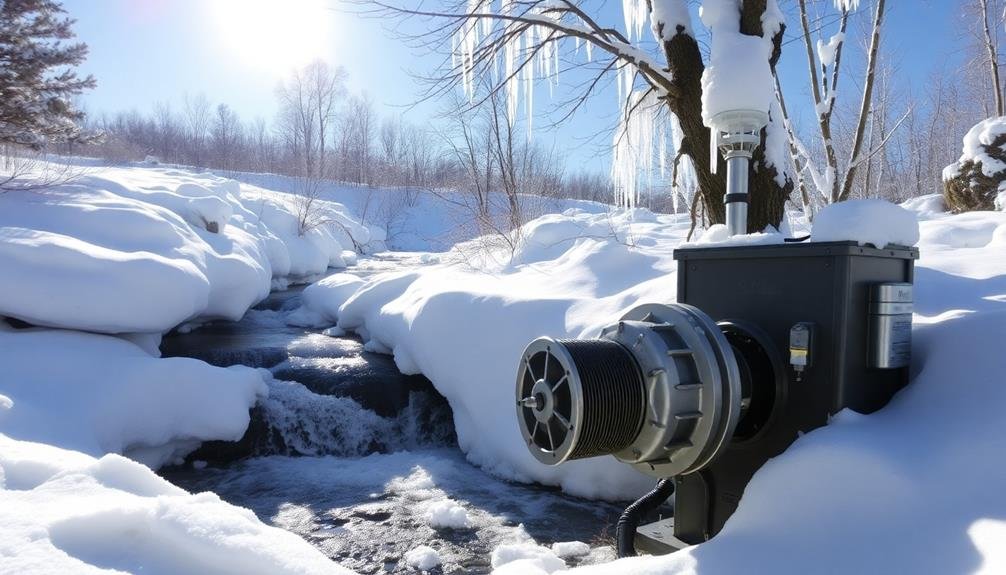
Winter's arrival brings unique challenges for micro-hydro system owners. To keep your system running efficiently, you'll need to take proactive steps to winterize it. Start by inspecting your intake pipe and screen for debris buildup, which can reduce water flow and freeze more easily. Clear any obstructions and consider installing a heated screen to prevent ice formation.
Insulate exposed pipes and the powerhouse to protect against freezing. Use heat tape on vulnerable sections, especially where water flow might slow down.
Don't forget to check your turbine for wear and tear, as cold temperatures can exacerbate existing issues. Lubricate moving parts with winter-grade grease to guarantee smooth operation in low temperatures.
Monitor your system's output closely during winter months. If you notice a significant drop, it could indicate ice buildup or other cold-related problems. Install a remote monitoring system to alert you to sudden changes in performance.
Consider implementing a bypass system to divert excess water and prevent damaging pressure buildup from ice formation. Regularly remove snow and ice from around your equipment to maintain access for maintenance and repairs.
Optimize Water Flow Management
Maintaining ideal water flow is essential for maximizing your micro-hydro system's winter output. To enhance water flow management, you'll need to focus on three key areas: intake efficiency, pipeline maintenance, and turbine performance.
First, verify your intake remains clear of ice and debris. Install a trash rack and heating elements to prevent freezing. Regularly inspect and clean the intake to maintain peak water capture. Next, insulate your pipeline to prevent freezing and minimize heat loss. Use heat tape or cable in vulnerable areas, and consider burying the pipeline below the frost line where possible.
Finally, improve your turbine's performance by adjusting its settings for winter conditions. You may need to reduce flow to prevent overloading during periods of increased water density. Monitor your system's output closely and make adjustments as needed.
| Factor | Challenge | Solution |
|---|---|---|
| Intake | Ice buildup | Heating elements |
| Pipeline | Freezing | Insulation, heat tape |
| Turbine | Overloading | Flow adjustment |
Prevent Freezing and Ice Buildup
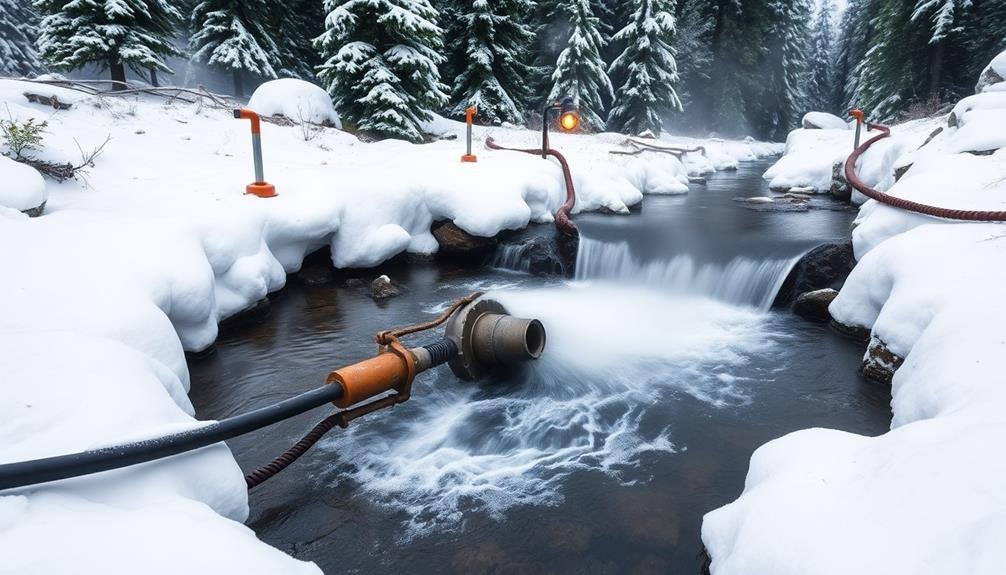
While optimizing water flow is vital, preventing freezing and ice buildup is equally important for your micro-hydro system's winter performance. Ice can obstruct water flow, damage equipment, and greatly reduce power generation. To protect your system, you'll need to implement several preventive measures.
Insulate exposed pipes and components to maintain water temperature above freezing. Use heat tape or pipe heaters in particularly vulnerable areas. Keep your intake screen clear of ice and debris to guarantee consistent water flow. Consider installing a bubbler system near the intake to prevent ice formation.
Here are four essential strategies to prevent freezing and ice buildup:
- Maintain constant water flow through the system
- Install a bypass valve to redirect excess water during low-demand periods
- Use a trash rack heater to prevent ice accumulation at the intake
- Implement a monitoring system to alert you of sudden temperature drops or flow reductions
Regular inspections are vital during winter months. Check for ice formation around the intake, penstock, and turbine housing.
If you notice any ice buildup, carefully remove it to prevent damage to your equipment. By taking these precautions, you'll guarantee your micro-hydro system continues to operate efficiently throughout the winter season.
Enhance Turbine Efficiency in Cold
As temperatures plummet, your micro-hydro turbine's efficiency can take a hit. Cold water becomes denser and more viscous, increasing friction and reducing flow rates. To counteract these effects, you'll need to enhance your system for winter conditions.
First, consider upgrading to a cold-weather-specific turbine designed to handle lower temperatures. These models often feature materials that resist contraction and maintain performance in frigid waters. You can also adjust your turbine's nozzle size to compensate for reduced flow rates, ensuring ideal water velocity hits the runner.
Insulate exposed pipes and the powerhouse to minimize heat loss and maintain water temperature. This helps prevent efficiency drops due to increased viscosity. Install a tailrace heater to keep discharged water from freezing and impeding flow.
Regular maintenance becomes vital in winter. Clean your turbine more frequently to remove any ice or debris buildup that could affect its performance. Lubricate moving parts with cold-weather-grade lubricants to reduce friction.
Monitor your system's output closely and adjust settings as needed. You might need to reduce electrical load during extreme cold spells to prevent overworking the turbine.
Monitor and Maintain Winter Performance
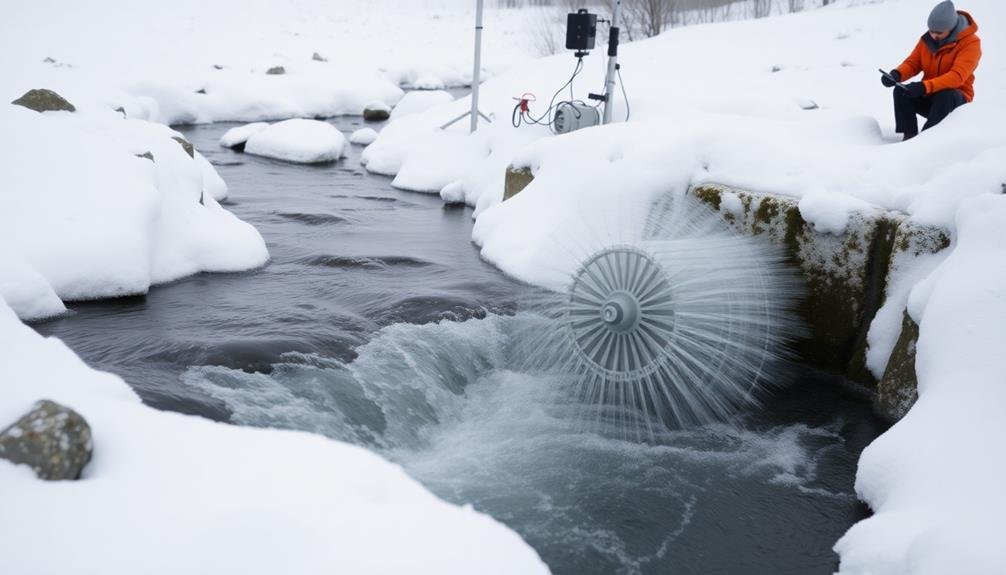
Regular monitoring and maintenance are essential for ideal winter performance of your micro-hydro system. Keep a close eye on your system's output and efficiency throughout the cold months.
Check for ice buildup around intakes, pipes, and turbines daily, and remove any accumulations promptly. Verify your system's components are properly insulated to prevent freezing and maintain peak operating temperatures.
To effectively monitor and maintain your micro-hydro system's winter performance:
- Install remote monitoring equipment to track power output, water flow, and system temperatures
- Conduct weekly inspections of all exposed components, looking for signs of wear, damage, or ice formation
- Maintain a detailed log of system performance, weather conditions, and maintenance activities
- Develop a winter-specific maintenance schedule, including more frequent cleaning and lubrication of moving parts
Don't forget to regularly clear snow and ice from access paths to your system components. This will make it easier to perform necessary maintenance and respond quickly to any issues that arise.
Frequently Asked Questions
How Does Snow Accumulation Affect Micro-Hydro System Performance?
Snow accumulation can decrease your micro-hydro system's performance. It reduces water flow by trapping moisture in snowpack. However, as temperatures rise, melting snow can boost water levels, potentially increasing your system's output during spring thaws.
Can Micro-Hydro Systems Generate Electricity During Complete Water Freezing?
Micro-hydro systems can't generate electricity during complete water freezing. You'll need flowing water for turbine operation. When water's frozen solid, there's no movement to power the system. Consider alternative energy sources for these periods.
What's the Typical Lifespan of a Micro-Hydro System in Harsh Winter Climates?
Your micro-hydro system's lifespan in harsh winters typically ranges from 20 to 30 years. You'll need to maintain it regularly, protect it from freezing, and replace components as needed to guarantee longevity in challenging climates.
Are There Specific Insurance Considerations for Winter Micro-Hydro System Operation?
You'll need specialized insurance for your micro-hydro system's winter operation. Consider coverage for freeze damage, equipment breakdown, and liability. Contact insurers experienced with renewable energy systems to guarantee you're adequately protected against winter-specific risks.
How Do Changing Winter Precipitation Patterns Impact Long-Term Micro-Hydro System Planning?
You'll need to adapt your long-term micro-hydro planning as winter precipitation patterns shift. Consider installing adjustable intake systems, implement water storage solutions, and diversify your energy sources to guarantee consistent power generation despite climate variability.
In Summary
You've now got the tools to keep your micro-hydro system running strong all winter. Remember, it's all about preparation and vigilance. Winterize early, manage your water flow wisely, and stay on top of ice prevention. Don't forget to fine-tune your turbine for cold weather and keep a close eye on performance. With these steps, you'll maximize your system's output even in the harshest conditions. Stay proactive, and you'll enjoy reliable, clean energy throughout the winter months.

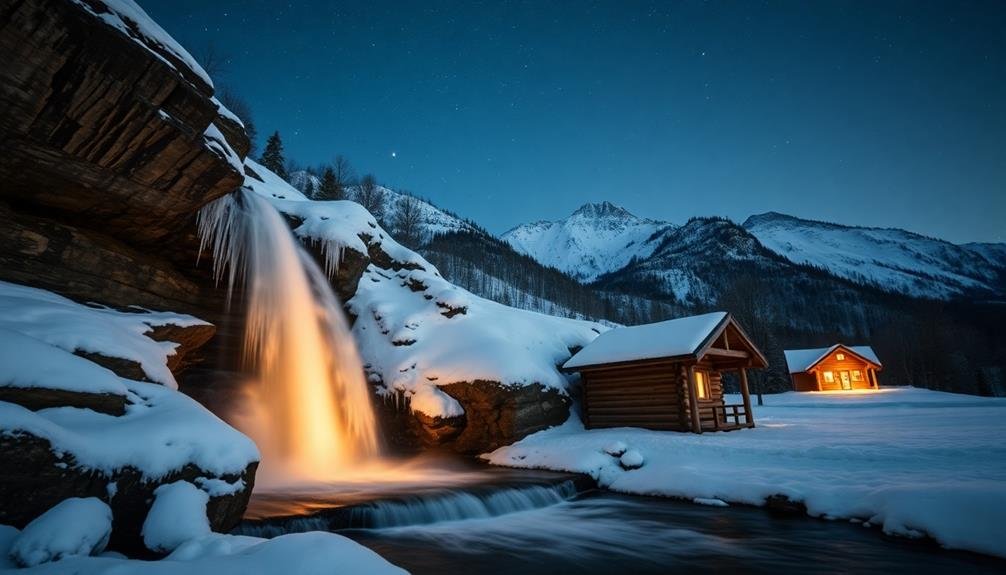

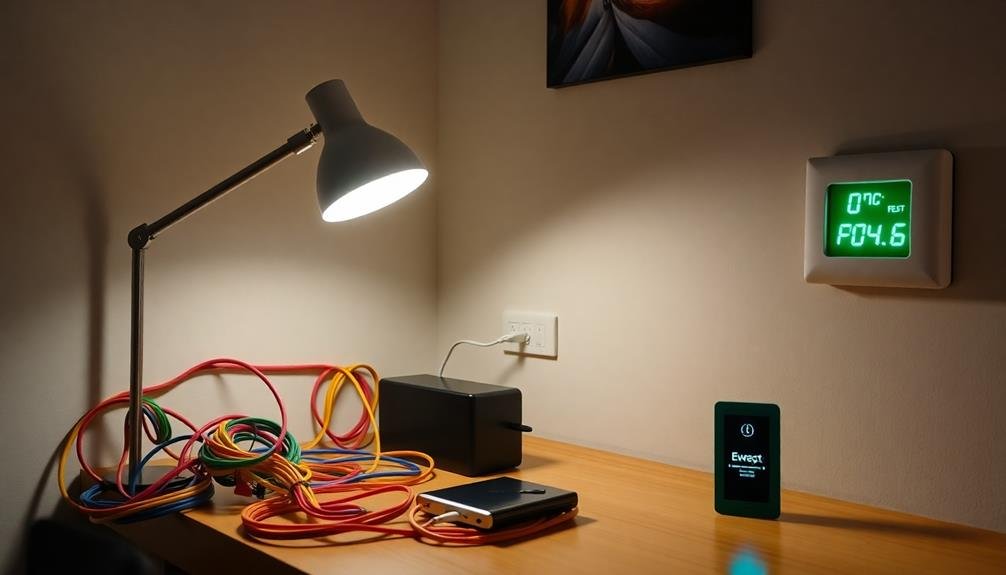
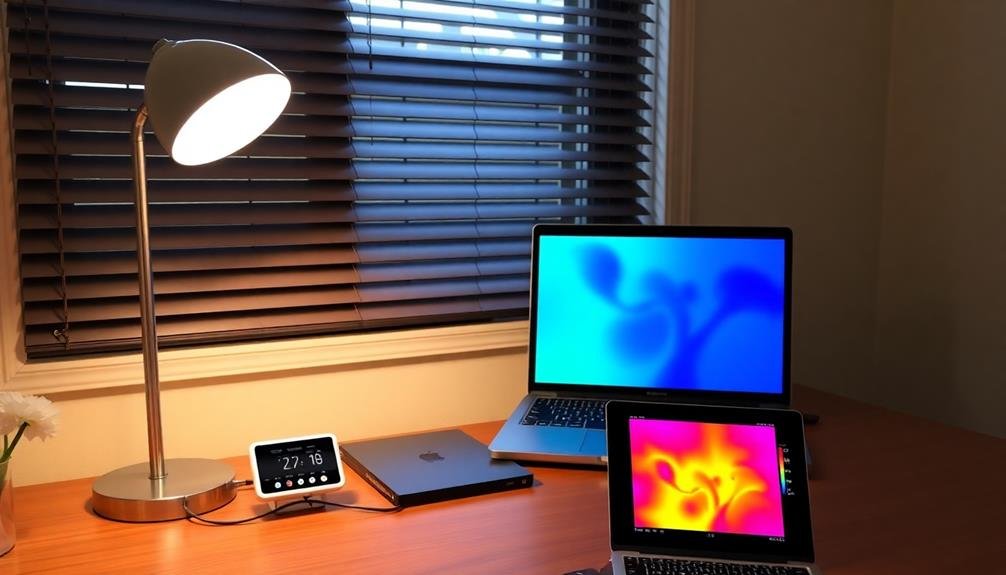
Leave a Reply